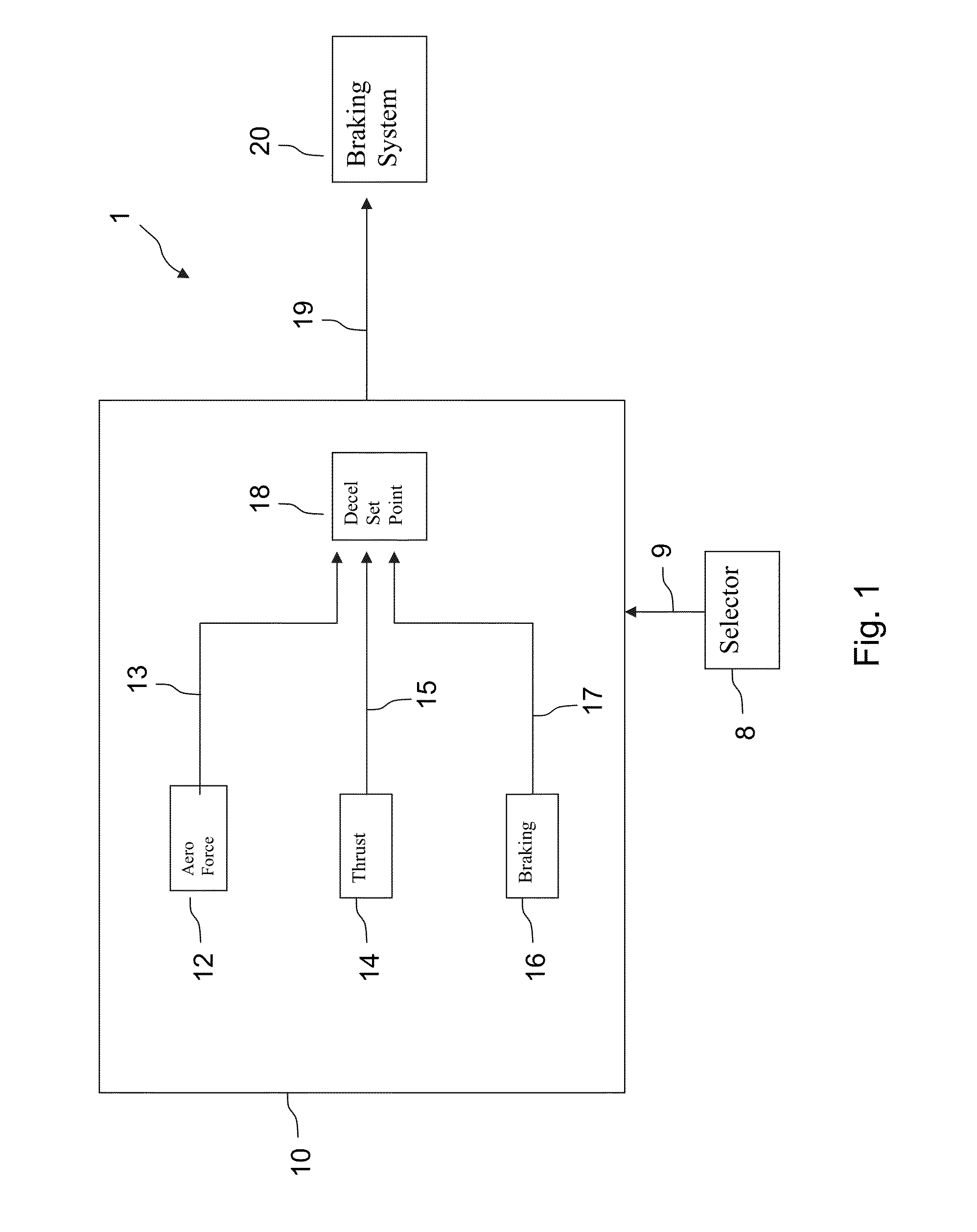Method and system for controlling aircraft braking on a runway
a technology for landing runways and aircraft, applied in the direction of automatic braking sequences, aircraft braking arrangements, instruments, etc., can solve the problems of inability to ensure the homogeneous state of the runway, high cost and time consumption of measuring braking performance on all runway states,
- Summary
- Abstract
- Description
- Claims
- Application Information
AI Technical Summary
Benefits of technology
Problems solved by technology
Method used
Image
Examples
Embodiment Construction
[0056]FIG. 1 illustrates a computer system 1 for controlling the braking of an aircraft. The system 1 may be an aircraft onboard system and in communication with and potentially control a braking system 20 of an aircraft. The device may include a deceleration computation means 10, and selection means 8 allowing a pilot or a crew member to select a dummy runway state for which he desires to simulate braking of the aircraft. These selection means is connected by a communications link 9 to the deceleration computation means 10.
[0057]When a pilot selects a dummy runway state by virtue of the selection means 8, the selected dummy runway sate is transmitted to the deceleration computation means 10, through the communications link 9. The deceleration computation means 10 may comprise a first means 12 for computing at least one aerodynamic force applied to the aircraft, a second means 14 for computing the thrust of the engines of the aircraft, a third means 16 for computing the braking forc...
PUM
 Login to View More
Login to View More Abstract
Description
Claims
Application Information
 Login to View More
Login to View More - R&D
- Intellectual Property
- Life Sciences
- Materials
- Tech Scout
- Unparalleled Data Quality
- Higher Quality Content
- 60% Fewer Hallucinations
Browse by: Latest US Patents, China's latest patents, Technical Efficacy Thesaurus, Application Domain, Technology Topic, Popular Technical Reports.
© 2025 PatSnap. All rights reserved.Legal|Privacy policy|Modern Slavery Act Transparency Statement|Sitemap|About US| Contact US: help@patsnap.com



